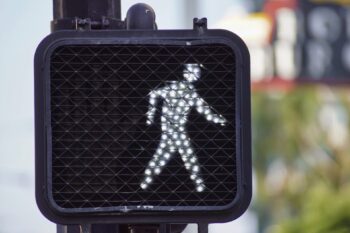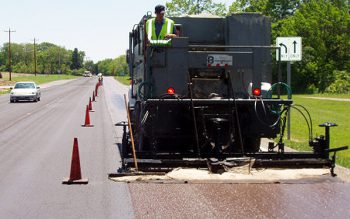You know the frustration. You’re driving down the street when the light ahead turns red. You wait at that red light then drive on only to arrive at the next light where there is another red. Then another red.
Not only does this test your patience but it adds to pollution and wastes time and gasoline.
“Why can’t they do something about these lights?” you might ask.
They have. On some of our major corridors.
Traffic signal interconnect design, or what most of us might refer to as traffic light coordination, has entered a new era – the age of smart sensors and traffic signal coordination. Traffic engineers working in the County Department of Public Works (DPW) no longer program a series of traffic lights on a street to go red and green at regular intervals. Instead, an entire network of signal controllers is connected with fiber-optic cable. With synchronization programming, and video detection systems reading the traffic flow and volume, these control boxes “talk” to each other. They constantly adjust signal intervals to allow the most efficient traffic movement along major corridors during morning and evening peak hours: 6 a.m. to 8 a.m. and 4 p.m. to 6 p.m.
County traffic engineer Carl Hickman explains that if a car travels at or near the posted speed limit during peak periods, the driver should normally encounter all green lights.
The synchronization also serves vehicles turning from side streets. A driver may wait just a bit longer at a red light on a side street, but once on the main thoroughfare, that driver will encounter less delay.
“Once fiber optic cable and communication devices are installed at each signalized intersection, we are able to implement traffic signal coordination timing plans for peak hours that will enable drivers to typically experience a 10 to 25 percent reduction in vehicular delays,” said Hickman.
Roadways located in Fallbrook and Bonita have recently been upgraded with this intelligent signal synchronization.
Other areas in the county where the modern traffic signal coordination systems are currently under construction are Spring Valley, Casa de Oro and 4S Ranch.
Costs range from a few hundred thousand dollars to $2.5 million. But the reduction in pollution as well as savings in time and precious gasoline is a tremendous benefit for the average driver. And don’t forget to count a reduction in the driver’s frustration level!
DPW engineers are constantly assessing traffic flow systems on County roads. So if you see engineers on the street, please remember they are working to make your commute safer and more expedient, so drive carefully.





